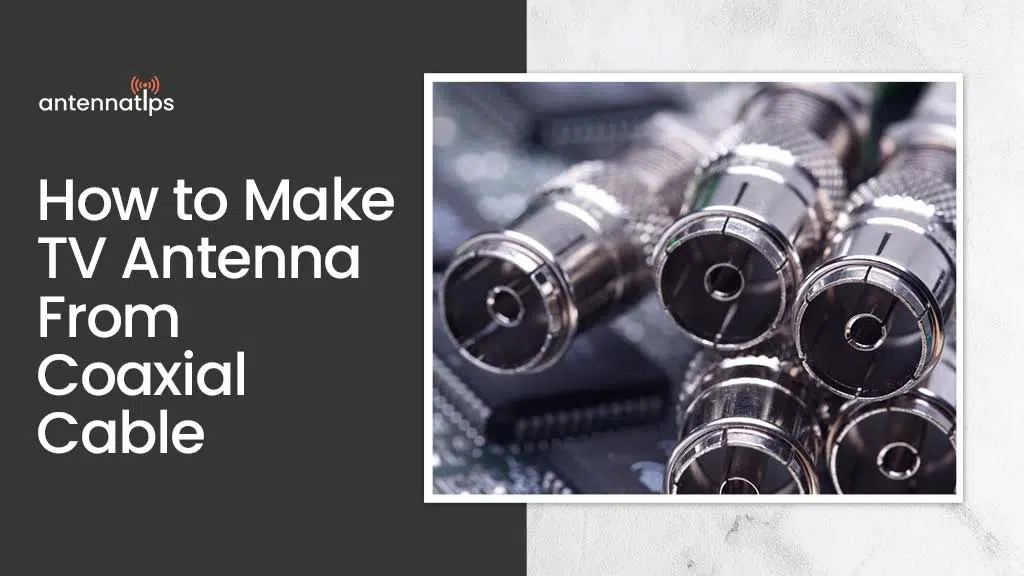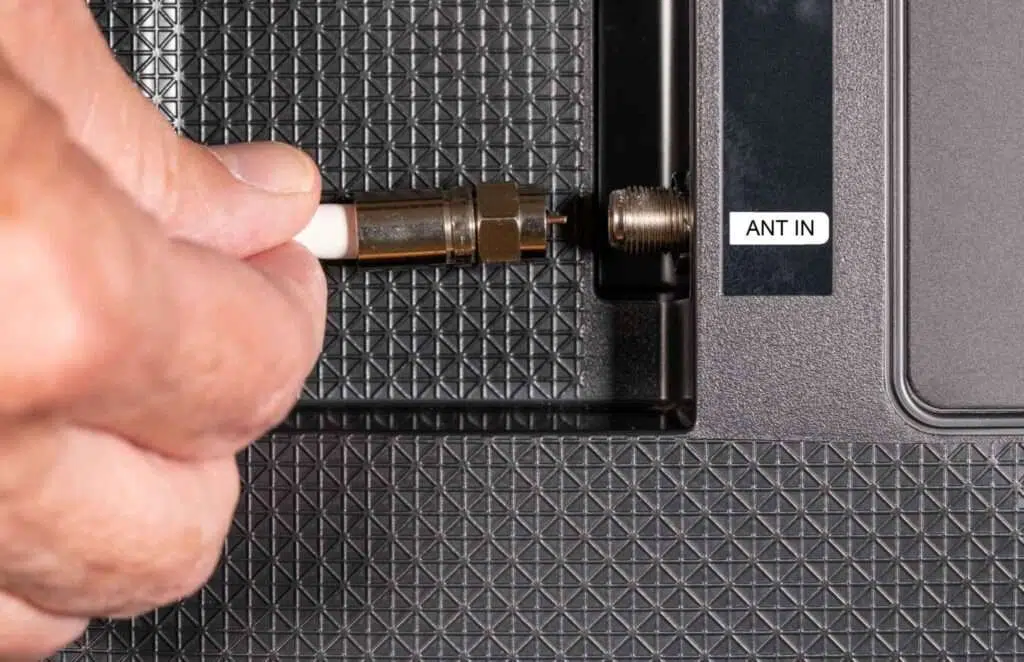
So you want to learn a simple, yet effective method in putting up a T.V. antenna?
You should be, because it’s not only easy to do, but also useful. In fact, it allows you to enjoy T.V. shows for free even after you cut the cord.
Moreover, an antenna made from coaxial cable prioritizes your best channels. A paid cable connection, on the other hand, runs several channels. But the sad part is that most of these channels tend to be off your list of favorites.
Therefore, you are paying for these shows you mostly don’t have time watching. It should feel frustrating, eh?
So, what are you waiting for? Learn our quick steps on how to make tv antenna from coaxial cable today!
If you read the entire article, you will learn the following:
- How to convert coaxial cable to a T.V. antenna
- How to enjoy free shows and networks despite cut cord
- How to fully maximize antenna connection for streaming
- And many more…
Hurry! Tune in and let’s begin…
How Can I Convert Coax Cable to T.V. Antenna?
To be able convert that old coaxial cable into a T.V. antenna, you will need the following elements:
- General knowledge about signal amplification
- General knowledge about electronics
- Knowledge about the right tools to use
- An innovative and creative mind
- Ample information sources, contact pages (for help), resource persons, repair hotlines, etc.
If you possess a great deal of these elements, you should be confident about revamping that old and seemingly useless coax cable.
Is it difficult to convert a coax cable into a T.V. antenna?
It is not difficult to convert a coax cable into a T.V. antenna. That is, if you have sufficient technical knowledge about the science of cable wiring and some high-quality materials.
What are possible challenges and considerations when converting a coax cable into a T.V. antenna?
Here are the challenges and considerations when converting a coax cable into a T.V. antenna:
- Latest T.V. designs do not have features that match coax cable connection.
- Some coax cables easily undergo tearing over time.
- Some coax cables might be too short to reach the T.V. connections.
- HDMI connections might interfere with coax connections.
- Coax cables tend to lose signals and data over distance.
Now that we have answered your questions, let us proceed with the helpful tips….
Quick Steps on How to Make T.V. Antenna From Coaxial Cable
Here are the quick diy tv antenna steps…
Step #1. Set Up a Board.
- Preferably look for and prepare a wooden board with dimensions: 1 x 3 x 2 x 3 inches, and a length of 22-24 inches.
- Work on the board horizontally starting from the left end going to the right end.
- Put 2 evenly spaced dots along each lining.
- Begin marking:
- 12.5 inches x 17.75 inches for the horizontal length
- 2 inches x 7.25 inches vertical
Step #2. Install the Copper Wiring System.
- Prepare copper wire.
- Divide 8 sections from the wire, measuring 14-15 inches per section.
- Divide the 8 sections to 4 by bending the wire. Allow a 3-inch allowance between the meeting tip of the 2 halves.
- Ensure that the folded part resembles a triangle.
Step #3. Link the Wires Together for Integrated System.
- Link the wires’ triangle or V-tip into the dots you made on the board.
- Secure the link with a screw.
- Arrange the wiring to a position where it extends outwards from the wooden board.
- Knit the whole body of the wire to integrate into the board. Weave folded ends or V-tips of the wire with another wire at one time each.
- Keep the wire surfaces from touching each other, only their V-tips.
- Continue knitting until first-second rows of X-shaped wires connect with the V-shaped ones.
- Maintain 2 horizontal lines/links between the X and V sets.
Step #4. Put in Grill Screens as Reflectors.
- Prepare 2 grill screen reflectors measuring 15 x 9 inches.
- Attach their tips to the evenly-spaced dots of the board. Let the 2 reflectors go over to behind the wooden board. Use screws for attaching.
- Position the reflectors such that they don’t touch the surface of the wires’ V-tips.
Step #5. Integrate the Whole System with a Transformer.
- Purchase a transformer, specifically a balun.
- Begin by linking the tip of the transformers into the wire’s dual middle sections.
- Refer to the product’s manuals to be sure.
Step #6. Connect Antenna & T.V.
- Use the coaxial cables as a link between the balun and the TV.
- Find the right ends to match.
- If the shape of each ends seem unclear, refer to the manual.
- In the absence of a manual, ask assistance from an electronics expert.

There you go – the quick and easy tips on how to make tv antenna from coaxial cable! See, the diy tv antenna using coax cable tips are not really that difficult.
If prepared with basic electronics knowledge, tools and information resources, you’re sure to be enjoying free T.V. shows in no time!
Now, we’d like to answer more of your questions. Continue reading below for the FAQs….
FAQs
What kind of coax cable should I use to set-up T.V. antenna?
Can I still buy coaxial cable to this day?
Can I split signals using coax cable?
Final Thoughts
Revamping and/converting your old coaxial cable into a T.V. antenna is easy if you are prepared with knowledge, tools and high-quality materials. Thus, it goes without saying that one had to be prepared when doing the tips on how to make a TV antenna from coaxial cable.
Finally, if you succeed with the tips, you are to be enjoying your favorite T.V. shows for free. Also, you can now say goodbye to paid channels you hardly watch.
For a takeaway: all 6 steps should deliver a positive result. If not, you might have to consider the challenges mentioned. Thus, you’ll have to secure a digital converter box. To secure the quality of your cable, have it proofed.
And, that’s about it….